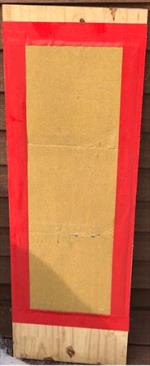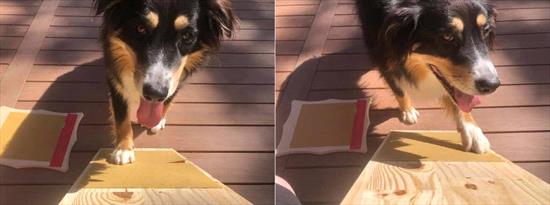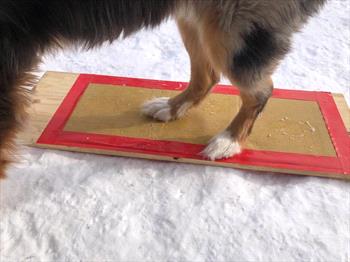Nail Board

Photo courtesy of Pat Koven, LVT, KPA-CTP
Many dogs do not like having their nails trimmed and some are outright petrified. Dogs can be taught to file their own nails using a nail board. Dogs learn to scratch on the board using a scratching or digging motion. Nail boards can be purchased or hand made using a board, duct tape, and coarse or medium sandpaper.
Learning to use the Nail Board
Dogs learn quickly how to use a nail board with minimal training. You shape the behavior by breaking down the completed behavior of scratching the board into smaller steps, rewarding your dog for completing each step.
These steps include approaching the board, touching it with any body part, touching with a paw, touching with multiple paws, moving the paw while touching the board, and finally scratching the board with each paw. When rewarding your dog, treats can be rolled down the board.
Using the Nail Board

Photo courtesy of Pat Koven, LVT, KPA-CTP
Minimal Training Required
Another alternative to nail board training is to incorporate fun games.
- Place the board on the ground, sprinkle it with treats then cover with a towel. Many dogs will dig through the towel to find the treats, filing their own nails in the process.
- Toss a squeaky toy on the ground and place the board on top. Encourage interest from your dog by stepping on the board lightly to make the toy squeak. Often your dog will dig at the board to get to the toy, filing his nails in the process.
- Place the board in a high traffic area where your dog frequently walks, such as near the door to go outside. Walking over the board will naturally file the nails.
- If you have a dog that frequently scratches to go outside, you can hang a small board on the door to encourage them to scratch the nail board instead.
Using the Nail Board

Photo courtesy of Pat Koven, LVT, KPA-CTP